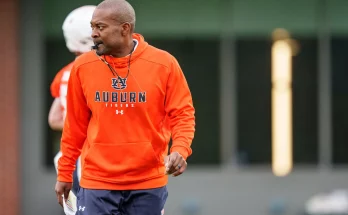Detroit Lions Dominate Miami Dolphins in One-Sided Joint NFL Practice, Says Nick Baumgardner
In what has been described as “as lopsided a joint NFL practice as I’ve ever seen,” the Detroit Lions overwhelmed the Miami Dolphins during their joint practice session, sending a clear message to the league about their preparation and potential heading into the upcoming season. This striking dominance not only caught the attention of observers but also offered a revealing glimpse into the current state of both teams as they gear up for the regular season.
Joint practices between NFL teams are rare opportunities for players and coaches to face off outside the pressures of a game environment while still testing skills, physicality, and tactical execution against unfamiliar opponents. These sessions are often competitive, with both teams striving to gain an edge, assess matchups, and build momentum. However, the imbalance witnessed in this practice, as reported by veteran sports journalist Nick Baumgardner, highlighted an unusually decisive advantage for the Lions over the Dolphins, a scenario that raises important questions and intriguing possibilities for fans and analysts alike.
Detroit’s performance was marked by a high level of physicality, execution, and energy that seemed to consistently outmatch Miami at every turn. From the first snap to the final whistle of practice, the Lions showcased a disciplined, aggressive approach that disrupted the Dolphins’ attempts to assert themselves. Both offensive and defensive units of Detroit appeared synchronized and focused, executing plays with precision while forcing errors and breakdowns in Miami’s schemes.
This dominant display is particularly notable considering the contrasting expectations and narratives surrounding these two teams. The Miami Dolphins have been touted as a rising force in the AFC, with a roster featuring dynamic offensive weapons and a defense that has shown improvement. Meanwhile, the Detroit Lions, long considered underdogs in the NFC North, have been working to redefine their identity under new leadership and a revamped roster. The Lions’ commanding performance during this joint practice thus challenges preconceived notions about their relative strengths and signals a potential shift in league dynamics.
Key to Detroit’s dominance was the apparent physical superiority and sharper execution in fundamental aspects of the game. The Lions’ defensive line consistently applied pressure, disrupting the Dolphins’ offensive rhythm and limiting the effectiveness of their quarterback and skill players. On offense, Detroit demonstrated a balanced attack that tested Miami’s defense at multiple levels, mixing power running with quick, precise passing. This multifaceted approach kept the Dolphins off balance and unable to respond effectively.
The psychological impact of such a lopsided practice cannot be underestimated. For the Lions, this experience likely serves as a powerful confidence boost, reinforcing belief in their preparation and the efficacy of their game plans. It also offers tangible evidence to players and coaches that their offseason work is translating into on-field success. Conversely, for the Dolphins, the session might act as a wake-up call, prompting reassessment of strategies, conditioning, and mental toughness as they seek to address the gaps exposed by Detroit.
Observers noted that the competitive intensity from the Lions was matched by a relentless work ethic and cohesion that set the tone for the practice. The players’ effort was evident not only in individual matchups but also in team communication and situational awareness. Coaches on both sides undoubtedly gathered valuable insights, with Detroit’s staff likely encouraged by the execution and resilience displayed by their squad.
From a broader perspective, this joint practice serves as a microcosm of the preparation and adjustment period all NFL teams undergo before the grind of the regular season. It underscores the importance of not only talent but also conditioning, discipline, and adaptability. While preseason games provide some measure of performance under pressure, joint practices offer unique opportunities to refine techniques and test competitive fire against opponents who are less familiar than typical division rivals.
Detroit’s dominating practice may also influence the way other teams view their prospects. A performance so one-sided tends to attract league-wide attention, potentially causing opponents to re-evaluate game plans when preparing to face the Lions. It can elevate the profile of key players who stood out during the session, as well as validate coaching decisions and schemes that have been implemented.
For the Miami Dolphins, the experience serves as a critical benchmark. The gaps exposed by Detroit’s dominance will likely spur internal discussions on how to improve. Whether addressing specific positional weaknesses, adjusting defensive alignments, or enhancing physical conditioning, Miami’s coaching staff will be tasked with ensuring that their team learns and grows from this humbling practice. Such moments, while difficult, often become catalysts for growth and resilience if met with the right mindset.
Fans of both teams will be watching closely as preseason games and the regular season approach, eager to see whether the trends hinted at in this joint practice will translate into competitive results on Sundays. Detroit supporters will take heart from their team’s ability to assert dominance over a respected opponent, while Dolphins fans may hope that their team can rebound quickly and make the necessary adjustments to compete at a high level.
The lopsided nature of the practice also raises interesting questions about the strategic approaches of the two coaching staffs. Detroit’s emphasis on physical dominance and execution suggests a clear vision and alignment between coaches and players, while Miami may need to revisit their preparation methodologies to ensure their team is ready to match such intensity. This could influence how both teams approach training camps, game plans, and player development in the coming weeks.
Importantly, joint practices like this are not solely about winning or losing in the traditional sense. They serve multiple functions including injury prevention, acclimating rookies and new players, and fostering competition within the roster. Yet, when one team so clearly outperforms another, it often signals deeper structural or developmental advantages that could be significant as the season unfolds.
Detroit’s dominant showing may be indicative of the franchise’s upward trajectory, reflecting successful offseason moves, improved coaching, and player buy-in. It also demonstrates the value of a cohesive team culture that prizes toughness and execution—qualities that have historically defined championship-caliber teams. For the Lions, this joint practice was an opportunity to showcase that culture in action against a quality opponent.
Meanwhile, the Dolphins face the challenge of addressing the shortcomings revealed during the session. They must turn this experience into a learning opportunity, refining their approach to avoid similar outcomes against other teams. Given Miami’s talented roster and strong organizational structure, it is expected that they will respond proactively, leveraging this setback to motivate improvement.
In sum, the joint practice between the Detroit Lions and Miami Dolphins offered a vivid snapshot of the competitive dynamics shaping the NFL’s preseason landscape. Detroit’s overwhelming dominance, as noted by Nick Baumgardner, serves as a compelling storyline that highlights the importance of preparation, execution, and mental toughness. It has set the stage for an intriguing season ahead, where lessons learned from such encounters will influence the trajectory of both teams.
As the NFL season draws near, the Lions’ commanding practice performance adds fuel to the narrative that they are a team on the rise, ready to challenge traditional powerhouses. Meanwhile, the Dolphins must regroup and recalibrate, striving to turn adversity into strength. Both teams will carry the insights from this lopsided session forward, determined to improve and compete at the highest level.
Ultimately, joint practices like this underscore the relentless pursuit of excellence that defines professional football. They remind fans and players alike that success is built not only on talent but on the willingness to outwork, outthink, and outfight opponents in every arena—whether it’s a packed stadium or a preseason practice field. For the Detroit Lions, this dominant display was a statement of intent, signaling their readiness to compete and win. For the Miami Dolphins, it was a stark reminder of the work still to be done.



